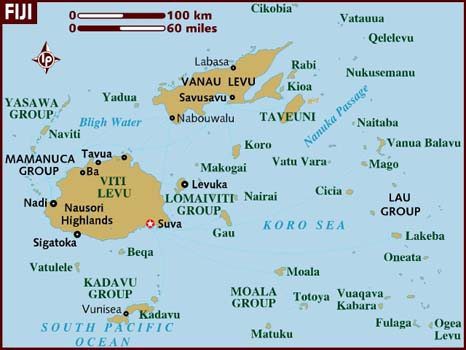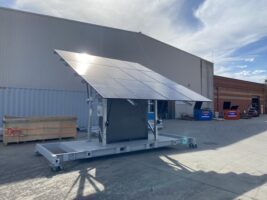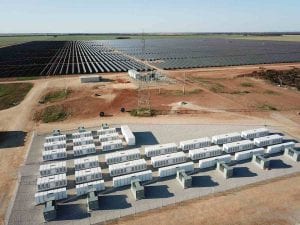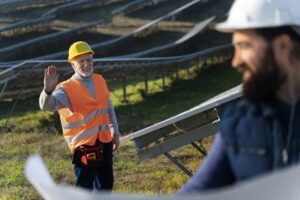There is talk around the docks of Suva that the real reason for the haphazard observation of shipping timetables may not always be because of some romantic notion of “Pacific time,” but something altogether more prosaic: the high cost of diesel.
The scuttlebutt suggests that some island services are so strapped for cash they cannot afford to buy their fuel until enough passengers have paid their fares so the boat’s operators can run around the corner and put in an order.
True or not, there is no doubt that the rising price of diesel is crippling the economics of inner island ferry services and trade, and not just in Fiji. It is also crippling the entire economies of some Pacific nations. As a recent island conference concluded in Malta earlier this month, island governments are spending an average of more than 20 per cent of their GDP on fuel imports. For some smaller nations, they rely on aid to buy their fuel because the cost is greater than their GDP, and fuel for transport is often far greater a cost that fuel for stationary energy.
In Fiji, the cost is high enough to make many of the routes uneconomic and to force the government to subsidise nearly half the cost of fuel for these – a considerable bill for a nation of 300 islands and where ferry and boat links are crucial. Fiji reportedly has a fuel import bill of $1 billion a year, and the Fiji government has announced it is looking for ways to cut that by at least $100 million.
And that’s got some people thinking about alternatives. While solar, wind, biofuels and batteries are often deployed to provide stationary energy – see Tokelau to become world’s first 100 per cent solar powered nation – that plan does not address transport fuels, which is even more challenging. The shipping industry at a global level is trying to work out the best means of reducing fuel costs, and emissions, and all sort of ideas have been presented – from kites, to sails, and even to solar-powered engines
Maersk recently unveiled what it dubbed as the “Prius of the sea.” It’s not so much an electric solution as a round-bottomed one, with a new design that focuses on fuel economy rather than speed. These new vessels, able to handle 18,000 containers, will reduce fuel consumption by 30 per cent and emissions by 50 per cent, the company estimates.
Such ideas may have an impact on the global seaborne trade, but are unlikely to make much difference to nations like Fiji. Some suggest its best option may be to delve into its own maritime traditions.
It’s often remembered that the Pacific nations were initially populated by intrepid ocean voyagers, but rarely are the extent of their skills recognised.
Take, for instance, these craft – known in Fiji as “Drua” or “Vaqa”, but which had similar versions from other nations. Their performance was so outstanding that voyagers from Captain Cook through to the end of the 19th century marveled at what they conceded were the “fastest sailing boat” in existence.

Not only were they capable of sailing nearer the wind than any European vessel, and could also carry large numbers of people and freight – doing 15-20 knots with up to 300 hundred people on board. They were about the same length as Cook’s Endeavour, could carry more people and loads, and were three times faster. They were, said Alden, “a product of barbarian genius”.
Sadly, the knowledge built up over generations was nearly lost in just the last two. But a recent renaissance of naval pride and knowledge, encompassed by the recently completed trek across the Pacific by seven such craft (one pictured below), has led many to believe that these ancient technologies could be adapted, and offer the opportunity for Fiji and other Pacific island nations to develop the first alternative shipping network in the world.

This, at least, is the vision of several groups, including Sailing for Sustainability and the Fijian Island Voyaging Society, which are trying to bring these designs back to life and apply them in a way that could act as inter island traders. They have begun discussions with the designers and promoters of a vessel such as the Tokyo-based Greenheart organisation, which has developed a 220 tonne prototype freighter with virtually unlimited range based around sails, but with solar PV for battery boosting and auxiliary power. Its shallow draft makes it suitable for beach landings, and its mast doubles as a crane.
Sailing for Sustainability and FIVS have teamed up with WWF and IUCN to seek funding for a project that could see these ships trialled in Fiji. Such a vessel could operate the “milk run” between the capital Suva and three transport modes in the Lau and Kadavu groups of islands. This could be augmented by three or four 10-tonne catamarans that draw on the Drua designs that could operate as village trading vessels. The broader vision is to connect all Pacific Islands in a sustainable, carbon-neutral way that would deliver energy independence, better infrastructure, and more economic opportunities for remote island communities.
Greenheart projects campaigns co-ordinator Jennifer Teeter said the “Sail-Powered Village Vessels” pilot Programme, and the creation of the first zero-emissions cargo network in the world, would be transformative for the Pacific community. “Sea-transport is literally these islands’ lifelines and servicing such communities has long been a major development barrier for Pacific governments,” she says. “Emerging technologies such as being spearheaded by Greenheart and B9 Shipping mean that Pacific communities now have a sustainable option to consider.”
The first Greenheart vessel (see image below) is currently seeking crowd-funding and will be completed next year, before beginning a global voyage that will include stops in Australia. Subsequent ships will be community-owned and crewed, micro-financed, open source design and zero-fuel/low environmental impact. It has been designed with assistance from Professor Takeshi Kinoshita of Tokoyo and Peter Schenzle, of the Hamburg Institute for Experimental Shipbuilding.

This is not the first time the “de-fueling” of the Pacific shipping network has been attempted. In 1984, a 300 tonne cargo vessel, the Na Mataisau, was retrofitted with a sailing rig that delivered nearly 25 per cent in fuel savings. In 1985, it foundered after being caught in a cyclone. The engines failed, but the sails took the boat to an island where the crew, including the prime minister and his party, could be rescued. But the boat was lost.
Biofuels are also an option. The US Navy has been boasting of its “green fleet” that is powered by biofuels. Fiji has a potentially strong biofuel option too, given the amount of bagasse produced from its crops of sugar cane, and other agricultural residues.
But it is the Drua, or a modern variation, that people think will not just capture the imagination, but also offer the most practical solutions. They were, in fact, multifunctional vessels. Their primary purpose was as the naval attack weapon of choice, and they saw service as blockade runners and enforcers, landing craft, fleet battleships, troop and supply transporters and deadly effective rammers.
There are graphic descriptions of the massive naval battles fought between island kingdoms. In times of peace they performed as diplomatic missions and passenger/cargo traders. One passage from the time noted that a pig could be roasted whole in the open cooking place, and one canoe carried 12 head of cattle in its holds.
The sad paradox now is that sea-borne trade from Fiji to Tonga now comes via Australia – a detour that makes it nearly 10 times the distance. But enthusiasm was heightened in the recent voyage of seven such vessels, representing the various pacific island nations raised the whole profile of the sailing. The Te Mana o te Moana – “Spirit of the Ocean – voyage organised by the FIVS and others raised the profile of sailing and was specifically designed to “revive the sills and lessons of our ancestors to apply to a sustained future for the youth of tomorrow.”
Now the University of the South Pacific has agreed to host a three day “Talanoa” or meeting and workshop, in November at its Suva campus, which will focus on sustainable sea transport in the Pacific. such a concept can be discussed over three days. “The capability to colonise one-third of the globe under sail and without metal is arguably the greatest technological intellectual property right of Oceanic peoples,” the flyer notes.
Various departments and colleagues at Fiji National University are being asked to contribute. The Asian Development Bank, the International Union for the Conservation of Nature, the WWF, the Secretariat for the Pacific Community, the European Union, and the United Nations Development Program have all become involved.










